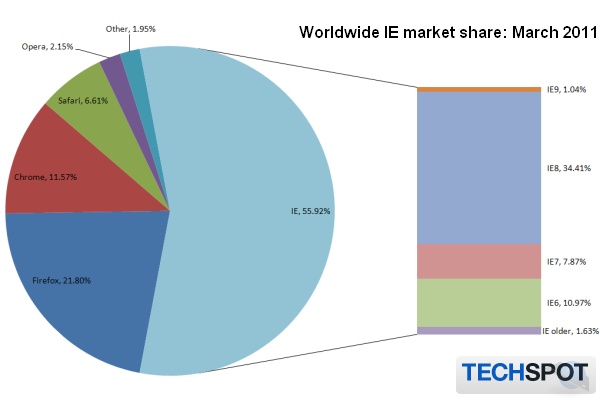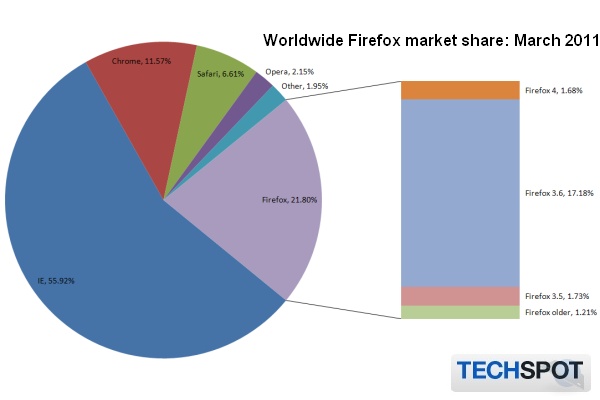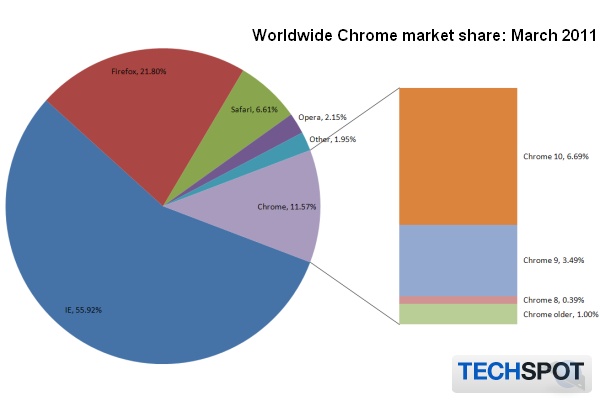I used to do regular browser market share posts, and now that IE9, Firefox 4, and Chrome 10 are all out, I think it's a good time to start again. The second browser war is upon us.
Between February and March, Internet Explorer dropped 0.85 percentage points after gaining share the previous month. Firefox, meanwhile, edged forward a mere 0.06 percentage points. Chrome gained 0.64 percentage points, making it last month's biggest winner. Safari was up 0.25 percentage points and Opera didn't move at all.

At 55.92 percent, Internet Explorer has once again hit a new low. This latest drop comes despite the release of IE9. Speaking of which, IE9 last month captured a decent 1.04 percent. IE8 lost 0.54 percentage points, but it's still the world's most popular browser. IE7 fell 0.18 percentage points and IE6 fell 0.36 percentage points. We're hoping that IE6 will fall below the 10 percent mark in the next few months.

At 21.80 percent, Firefox is still below the peak it reached last year (24.72 percent). This month we will see how the new version affects the browser's overall market share. Speaking of which, Firefox 4 last month captured a decent 1.68 percent. Firefox 3.6 lost 0.64 percentage points and Firefox 3.5 lost 0.22 percentage points.

At 11.57 percent, Chrome has hit a new high. The browser's built-in updating system is working wonders for Google. Chrome 10 gained 6.38 percentage points last month. Chrome 9 fell 4.07 percentage points. Chrome 8 dropped 1.86 percentage points. The result is that Chrome 10, the latest stable version, already has the largest market share for Chrome.
The data is courtesy of Net Applications. For next month, I'll try to get data from TechSpot itself as well.